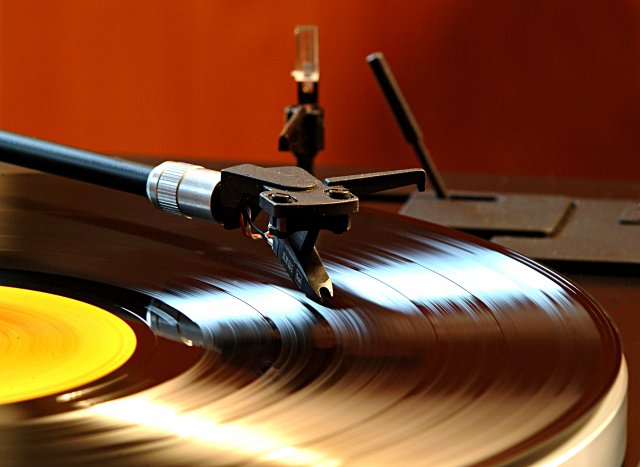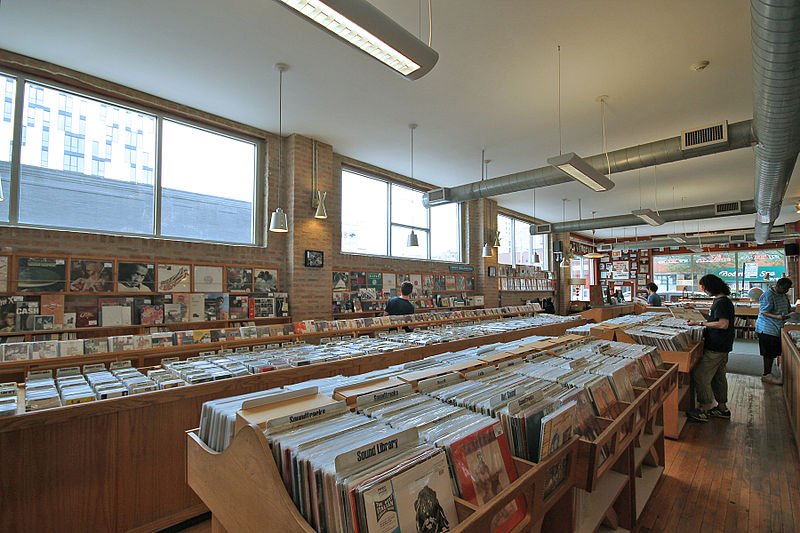
Since their arrival on the music scene in the 1930s, vinyl records became a staple in the recording industry. While their use decreased due to digital recording methods becoming more dominant over the last couple of decades, this older medium continues to be valued for its unique and rich sound. Let’s take a closer look at this method of analog recording.
The Roots of Vinyl Records
The beginnings of vinyl records can be traced back to the development of the phonoautograph in 1855. Developed by Édouard-Léon Scott de Martinville, this is the first device recognized for recording sound waves. While unable to play back the sounds, this invention was influential in paving the way for future developments in recording technology. The design was based on the human ear canal and included a membrane attached to a stylus and a mouthpiece horn. The sound waves were recorded by the stylus onto a rotating cylinder wrapped in paper.
Two decades later, Thomas Edison invented the phonograph. Using cylinders, this device recorded and, for the first time, successfully reproduced sounds. Only a few years later, Emile Berliner built upon Edison’s phonograph and created a disc record gramophone. In addition to lower pitch fluctuations than cylinders, disc records were favored in the marketplace as they were easier and more cost-effective to mass produce.
The earliest versions of these discs were typically created with shellac. Many issues, however, arose with using this type of material, which was both brittle and easily breakable. As record companies sought to develop longer-playing records, LPs, they realized the need for a more durable medium that could hold smaller grooves. Shellac, unfortunately, did not have the capability to hold the sound information of the small grooves.
Enter: vinyl. This harder material allowed for the production of longer-playing records by increasing the number of grooves per inch. Additionally, vinyl provided less playback noise than its previous counterpart, creating a smoother sound.

As the turntable spins, the needle on the record follows the grooves of the disc and picks up vibrations, which are converted into sound waves. Image by Knipsermann, via Wikimedia Commons.
How Vinyl Records Achieve Their Special Sound
Close your eyes and listen to the first few seconds of a song. It is likely that you will be able to distinguish if the sound is coming from a vinyl record or a digital recording. What makes this difference so apparent?
Answers to this can be found in the way the music is recorded. As an analog recording, vinyl records store sound as a continuous signal. The grooves carved into the vinyl record mirror the waveforms from the original sound. On the other hand, digital recordings involve the conversion of audio signals into discrete numbers. In other words, the digital recording uses snapshots of the analog signal at a certain rate to create the resulting sound. As the signal is produced from the samples, it can sometimes differ from the original signal due to lower resolution sampling, an effect known as aliasing. This effect can produce audio with a lower sound quality and non-harmonic distortion.
Note that in modern CD, DVD, or blu-ray recordings, sampling rates are very high, resulting in aliasing that is potentially very small. Aliasing, however, can still be generated in digital to analog (DA) converters of poor quality when the continuous analog signal is reproduced and fed to the speakers, or headphones.
You may already be familiar with the “warmth” associated with vinyl records. This refers to the detail and authenticity in analog recordings. With vinyl records, sound waves are physically imprinted on the record’s surface. Playing these analog recordings on a turntable produces harmonic distortion within the audio signal, which adds overtones to the sound. This provides the records with their so-called “warmth.”
Although vinyl records are more sensitive to scratches and dust, this seems to be part of their charm. Some people find that this gives these records character and a more personal feel when listening to them.
A Long-Standing Music Tradition
In an age of advancing recording technology, vinyl records continue to solidify their popularity within the music industry. According to a recent music industry report from Nielsen Entertainment, vinyl sales have increased by more than 40% from 2013, while sales of albums in general have dropped by nearly 15%.

The sale of vinyl records continues to grow. Image by stevenjohnson 3126715155, via Wikimedia Commons.
Today, many digital recordings are trying to replicate the unique sounds associated with these analog recordings. However, for many people like me, the true enjoyment comes from both the sound — and the feel — of a real vinyl record.



Comments (0)